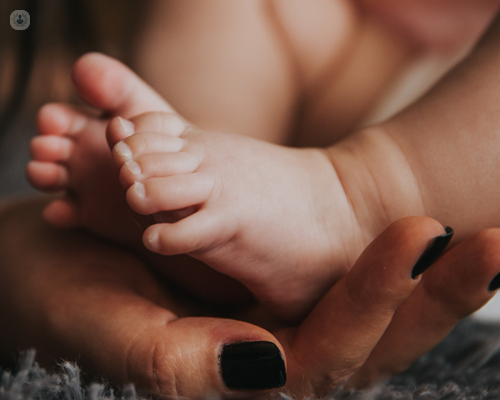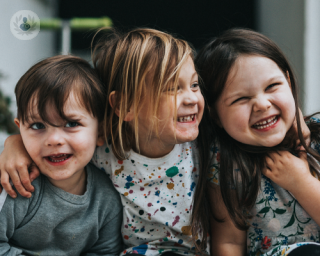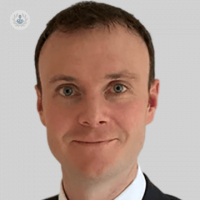Club foot
Mr Nigel Kiely - Paediatric orthopaedics
Created on: 06-21-2013
Updated on: 07-19-2023
Edited by: Kate Forristal
What is clubfoot?
Clubfoot, also called talipes equinovarus or just talipes, is a condition affecting the muscles and bones in the feet. It is relatively common – around 1 in every 1,000 babies in the UK is born with a club foot. In around half of those affected, the condition is present in both feet.

What are the symptoms of clubfoot?
The main symptom is the appearance of the baby’s foot or feet, which point downwards and inwards.
Feet affected by club foot are usually smaller than other feet, and can be mild, moderate, or severe.
Another symptom is that the calf muscles in the affected limbs are thinner.
What specialists treat clubfoot?
Paediatricians specialise in diagnosing and treating conditions in babies and children. Paediatric orthopaedic surgeons in particular specialise in musculoskeletal conditions such as club foot. Club foot is often treated by a multidisciplinary medical team.
Is clubfoot painful for babies?
Despite the shape of the foot, clubfoot does not seem to cause babies any pain; however, treatment is recommended as it can become painful later when the child learns to walk.
What causes clubfoot?
The exact cause is unknown, and there could be many reasons why a club foot occurs.
Is clubfoot genetic?
There is thought to be a genetic factor to club foot, as it can run in some families. It is more common in boys than in girls.
How is clubfoot diagnosed?
While club foot is clear to see when the baby is born, it may be diagnosed before birth if seen on an ultrasound scan. While it can’t be treated until the baby is born, knowing what to expect can help the parents plan treatment.
If the condition hasn’t been detected during the pregnancy, medical staff will diagnose it at birth by performing a physical examination.

What are the long-term effects of clubfoot?
If club foot is not treated, the foot position will not improve. This will make walking and shoe fitting difficult, and cause pain in an older child.
How is clubfoot treated?
Clubfoot is treatable and treatment is always needed as the condition will not get better itself. In the past, the condition was always treated with surgery, but now the standard method is the Ponseti method. This involves gently stretching the foot, applying a full leg plaster cast, and repeating the process weekly. This continues for approximately 6 weeks.
Most babies need a minor operation to release the achilles tendon after the final cast comes off. The operation is performed under a local anaesthetic and is known as a tenotomy.
A further cast is applied for 3 weeks to allow the tendon to heal. The child is then fitted with boots and bars to maintain the correction. The boots and bar are worn for 12 weeks for 23 hours per day, then at night time until the age of five. Regular check-ups are carried out during this time to offer support, advice and boot fitting. The child can wear normal shoes or go barefoot during the day time.
What is the prognosis of clubfoot?
The outlook for the majority of children is very good. Some children will need further treatment, such as repeating casting. Some children may require an operation to move a tendon in the foot (tibialis anterior tendon transfer) if the foot starts to turn back in after the age of 2 years.
Can clubfoot come back?
Clubfoot can recur and is more likely to happen in severe cases rather than milder cases. Whether treatment is required, depends on the severity of the relapse. The best way to reduce the chance of recurrence is to maintain good routine with the boots and bars treatment.







